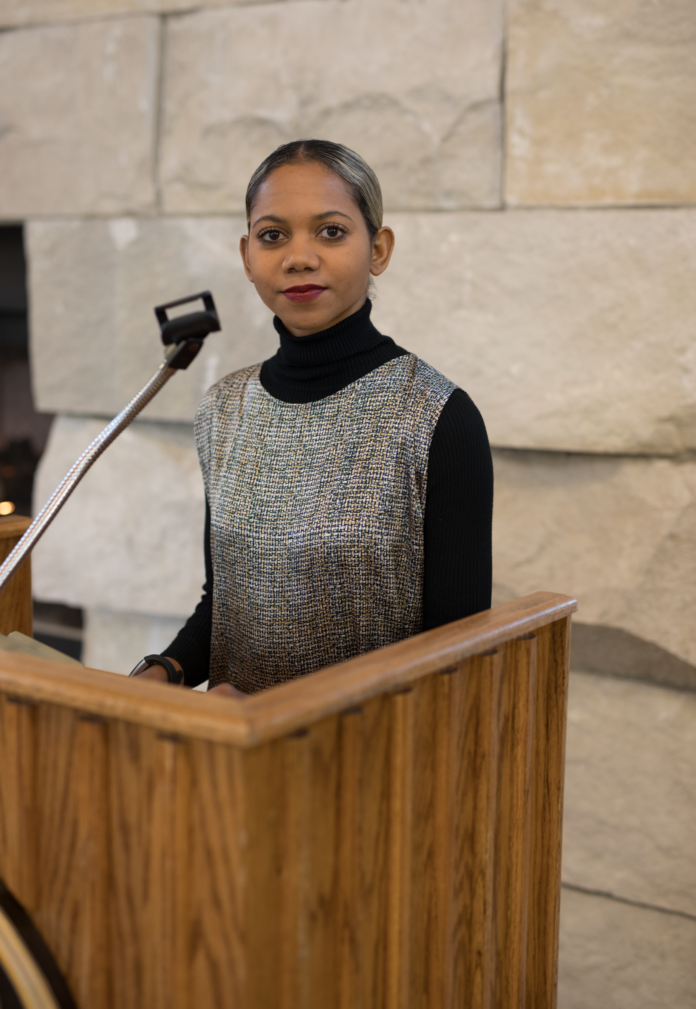

Tabitha St. Bernard-Jacobs was invited to DePauw University by the Prindle Institute of Ethics to serve as the speaker of the Dorothy Garrett Martin Lecture hosted at 7:30 p.m. in Kresge Auditorium on Oct. 24.
The DePauw sat down with St. Bernard-Jacobs for a one-on-one interview about her success as a New York City fashion designer and as an organizer of the Women’s March in Washington D.C. Answers have been edited for length and clarity.
The DePauw: Some of the readers might not know about the Women’s March. What is the mission of the Women’s March and what role do you play in it?
Tabitha St. Bernard-Jacobs: The Women’s March is an intersectional movement of women who stand together as a collective voice against injustices. We fight for gender etiquette. It was a movement that started after the election, but it is based on issues that have been affecting women for a long time. When one of my friends from the fashion industry started a (Women’s March) page on Facebook, I reached out to her to ask if she needed help. The Facebook page blew up almost instantly. We then each picked an area we wanted to focus on; an area of need in the Women’s March. I picked Youth and Family because I have a son, and family is very important to me. I was often silenced as a teenager and I want to make sure young people do not feel that way. I want to make sure they know there is a space for them in the Women’s March.
TDP: Speaking as someone who doesn’t know a lot about fashion, how on earth do you begin to launch a clothing line?
TSBJ: I actually design two lines of clothing: Tabii Just and LIVARI. There’s the practical ‘how I put it into motion,’ and then there’s the existential. The existential ‘how I put it into motion’ was I spoke it into existence. I wanted to do a fashion line and I knew nothing about starting a company or how to run it. I just started talking about it every chance I got, and eventually people started offering help.
TDP: How do your two lines differ?
TSBJ: Tabii Just is zero waistline clothing that’s made in New York City. It is a dress line; we mostly do silks. It’s very wearable clothing that can be worn by a variety of body sizes. LIVARI is ethical clothing for the empowered woman. It is more of a designer line; there are some red-carpet pieces.
TDP: How did you get interested in fashion?
TSBJ: I’ve always been into fashion. I never really thought of it as a career because it wasn’t a possibility as a child because I grew up poor in Trinidad. But I’ve always been interested in clothes and was always making stuff. When I had to make a decision in my mid-20s about what I wanted to do with my life, fashion was that thing. I knew very little about it, and very little about careers in fashion. I just knew I wanted to work in fashion in some way. So, I started working at it. I’ve always been the type of person when I want something, I go after it, and then I work really hard to make it happen.
TDP: As the organizer of the Women’s March and as a major fashion designer, how do you balance all of it?
TSBJ: Truthfully, I don’t get a lot of sleep and I go to bed around 2 a.m. every night. I also have a very understanding family. My son is used to all this, and he goes to a lot of the Women’s March stuff with me. From a very young age, he’s known the deal. The key is to have quality time with him and my husband. I think for every mom, it is a juggling act.
